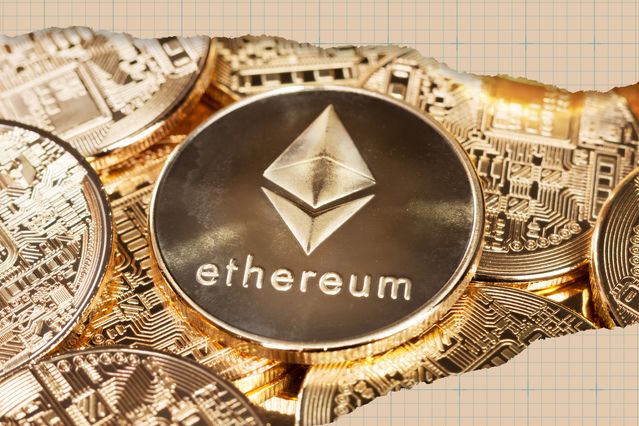
Ethereum’s Evolution: Predicting the Future After the Merge
Introduction
The Ethereum network has been a hot topic in the world of cryptocurrencies since its inception in 2015. With the recent completion of the Ethereum 2.0 merge, the blockchain has transitioned from a Proof of Work (PoW) to a Proof of Stake (PoS) consensus mechanism. This groundbreaking change has left many experts, investors, and enthusiasts wondering what the future holds for Ethereum. In this article, we will explore the implications of the merge and offer a few predictions for Ethereum’s future trajectory.
Future of Ethereum
Increased Network Efficiency and Scalability
One of the most immediate benefits of the merge is a substantial increase in network efficiency and scalability. PoS eliminates the need for miners to expend vast amounts of energy on solving complex mathematical problems. This shift is expected to reduce Ethereum’s energy consumption by over 99%, making it more eco-friendly and sustainable in the long run.
Moreover, the implementation of shard chains will enable the Ethereum network to process more transactions simultaneously. This will help the network handle a higher volume of transactions per second (tps), alleviating congestion issues and reducing transaction fees. As a result, we can expect the Ethereum blockchain to become more appealing for developers and users alike.
Enhanced Security
The PoS consensus mechanism promises to enhance Ethereum’s security by reducing the risk of 51% attacks. With PoS, validators are required to stake their Ether (ETH) in order to propose and validate blocks. This staking mechanism ensures that validators have a vested interest in maintaining the network’s integrity. An attacker would need to control a significant portion of the total staked Ether to launch a successful 51% attack, making it a costly and risky endeavor.
Increased Decentralization
The shift to PoS should lead to increased decentralization within the Ethereum network. By eliminating the need for expensive mining equipment, the barrier to entry for becoming a validator is significantly lowered. This will allow for a more diverse pool of validators, reducing the risk of centralization and ensuring that the network remains robust and secure.
Growth in Decentralized Finance (DeFi) and Non-Fungible Tokens (NFTs)
Ethereum’s improved scalability and reduced transaction fees are expected to fuel further growth in the DeFi and NFT sectors. As the leading platform for smart contracts, Ethereum has already demonstrated its potential to revolutionize various industries, from finance to gaming and digital art. With the merge, Ethereum’s capacity to support innovative applications is likely to expand, leading to an influx of new projects and increased adoption of DeFi and NFTs.
Ether (ETH) Price Predictions
With the transition to PoS, Ether is likely to become a more valuable asset due to its role in securing the network. Validators will be required to stake their ETH, which could lead to a reduction in the circulating supply, potentially driving up demand and value. Furthermore, the increased adoption of Ethereum-based applications may create additional demand for Ether, resulting in a positive impact on its price.
Beyond Immediate Benefits
The Ethereum 2.0 merge and its implications extend far beyond the immediate benefits outlined above. As the network gains traction in terms of adoption and innovation, a domino effect is expected to take place, impacting various aspects of technology, society, and global finance. Ethereum’s transition to PoS not only marks a significant step towards addressing environmental concerns related to cryptocurrency mining but also paves the way for future developments that could radically change how we perceive and interact with digital assets.
For one, the advent of Layer 2 solutions, such as Optimistic Rollups and ZK-Rollups, alongside the implementation of shard chains, can be expected to further enhance Ethereum’s scalability. These innovative approaches will allow for a greater number of transactions to be processed off-chain, while still maintaining the security and decentralization that the Ethereum network is known for. The increased throughput facilitated by these solutions will likely attract more developers and businesses to build on Ethereum, leading to an exponential increase in the number of decentralized applications (dApps) and use cases that leverage the network’s capabilities.
Furthermore, the merge is expected to propel the adoption of blockchain technology in the realm of traditional finance, enabling the creation of decentralized financial instruments that could challenge existing centralized systems. As more people gain access to decentralized financial services, the Ethereum network will play an increasingly crucial role in fostering financial inclusion, especially in developing countries where a large proportion of the population remains unbanked. This increased access to financial services will empower individuals and businesses, opening up new opportunities for wealth generation and economic growth.
Conclusion
The Ethereum 2.0 merge has ushered in a new era for the blockchain, one marked by increased efficiency, scalability, and security. As the network continues to evolve, we can expect further growth in the DeFi and NFT sectors, as well as a potential increase in Ether’s value. While it is impossible to predict the future with absolute certainty, it is clear that Ethereum’s transition to PoS marks a major milestone in its journey to becoming a global, decentralized platform for innovation and value creation.
Joshua Bejerano is a top-level crypto journalist who has been in the business for years. He got his start in the early days of Bitcoin, and has never looked back since. He is a highly respected member of the community, and is known for his incisive analysis and insightful writing.
When he's not busy reporting on the latest news in the crypto world, Joshua enjoys spending time with his family and friends. He is also an avid mountain biker, and can often be found out on the trails near his home.



